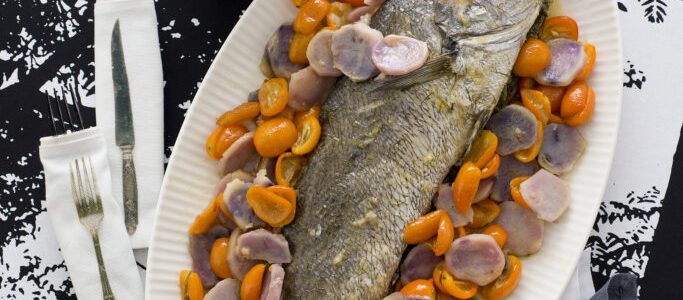Prosecco has existed for more than two hundred years, but it is only from the second half of the New Millennium that it has become the ubiquitous sparkling wine in our aperitifs and celebrations. Now, in 2020, a new revolution is under way, the arrival of rosé, and so we got help from Michele Rimpici, from Verona, founder of Cantina Urbana and wine consultant, to orient ourselves among the jungle of bottles for this New Year's Eve. What to choose, and how? Here's what we learned from talking to him.
When the crisis helped us
If champagne blossomed in the 1980s with the promise of wealth and economic growth, with the advent of the DOC in 2008 (and perhaps also with the global economic crisis), the global shift to Prosecco was made. A less pretentious wine, which adapts to many contexts, is cheap and you can also make a spritz: a wine to drink without worries and which thanks to its Italian character has established itself abroad, ousting the then dominion of the Spanish Cava. Today it is the most exported wine in Italy and we produce more than 500 million bottles.
Prosecco is not always sparkling
Contrary to what many think Prosecco is not a production method, but it is a wine produced withglera grapes. Glera is an ancient grape, already mentioned in Roman texts, its chosen land remains the Treviso area and in particular the complex hilly system between Conegliano and Valdobbiadene. There the wines can boast the Docg, while for the Doc in the last ten years the cultivation of grapes has spread like wildfire, reaching as far as Friuli Venezia-Giulia and all the Venetian provinces, often replacing other native varieties. Now 80% of the Veneto vines and 20% of Friuli are glera. To be Prosecco, the wine must be produced with at least 85% glera, but it does not have to be produced with the Martinotti method and become a sparkling wine. In some authentic Venetian tavern you can still order the Quiet Prosecco, or rather still, and the ancestral prosecco is making a comeback more and more, refermented in the bottle and often sold “colfondo”, which is moved rather than sparkling.
The difference with champagne
Champagne and Prosecco are two very different wines, Prosecco is to champagne as pop music is to classical music, and its luck is precisely that of being pop, suitable for parties as well as for everyday moments. The Martinotti (or Charmat) method is certainly the method that allowed us to bring such an inexpensive sparkling wine to the table. In fact, the second fermentation typical of Prosecco, the one that develops the bubbles, takes place directly in the autoclave, with the addition of sugars and yeasts. This allows you to significantly lower the production price of course compared to champagne. The fine French wine as well as Franciacorta and Trentodoc are produced with the Classic method, i.e. refermenting the wine in the single bottle that is turned on itself for months, it comes out to remove the yeasts and bottled again before being left to refine.
The ancestors: as it once was
However, the Charmat Method is not the only way to produce Prosecco. There are Prosecco called “Ancestral” which are produced with a method historically used halfway between a Charmat Method and a Classic Method; and which was once also used in champagne. After the harvest, the wine is left to ferment in steel at a rather cool controlled temperature so that the yeasts naturally present in the grapes can work on the sugars, but maintaining a high sugar residue. The wine is then bottled, without further additions of sugars and yeasts, so that the fermentation resumes and a slight sparkling develops. By not disgorging, the yeasts remain in the bottle, forming a residue; in fact they are defined "colfondo".
Without the bang
The champagne mushroom cap is a modern invention for Prosecco. Until twenty years ago it was a wine that people bottled at home with a crown cap, and it did not have those bubbles that we see today, but simply a little sparkling due to the natural fermentation process that took place in the bottle. There was no sparkling wine and no bang, that is an invention born on the wave of fashion, celebration, champagne. The real Prosecco was therefore "moved" or "quiet"; in fact from Cantina Urbana his sparkling wine is called El Moss, 100% organic glera, beer cap for € 6.90.
What to try
Historic brands such as Valdo, Bisol, Canevel, Collalto, Follador, Adami, Nino Franco, who cultivate their vines and have a wide range of products, in which there are also premium bottles. And then the ancestral bottles of Casa Coste Piane, Costadilà, Marchiori family, Ca ’del Zago, Gregoletto, Silvano Follador, Malibran and also by Adami and Nino Franco. You can find them online and in the wine shop.
2020: the year of rosé
This is the year of the greatest revolution in the world of Prosecco: Prosecco rosé has been admitted under the Prosecco Doc and Docg brands. Prosecco rosè comes from a blend of Glera and black berried grapes, at most 15% of the total, which gives it a very captivating pink color – especially abroad – but also a different aromatic complexity. All the major wineries launched their own pink bottle in November, it remains to be seen whether it will defeat the classic straw yellow prosecco …
![]() Browse the gallery
Browse the galleryText by Jacopo Giavara, Margo Schachter

